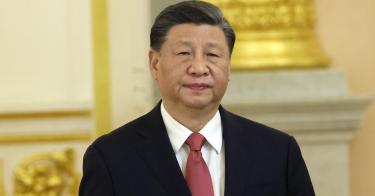For years, China complained about the development and deployment of American missile defenses, a capability that Beijing didn’t have and claimed would undermine strategic stability and security in Asia.
It’s funny how you don’t hear Beijing protesting about the development and deployment of U.S. missile defenses anymore now that China itself is developing and deploying missile defense systems.
Talk about hypocrisy.
China’s Defense Ministry reported earlier this month that one of its missile defense systems had conducted a “ground-based midcourse missile interception test” that had achieved “the desired [but unspecified] test objective.”
Naturally, the Chinese claimed that the test was “defensive in nature and not targeted against any country.” But considering the tense ties with the U.S., this test certainly was directed at Washington.
It is curious, though, that there was no mention of how a Chinese missile defense system possibly would undermine stability and security in Asia like an American system was supposed to do.
Actually, it’s not curious at all.
As you may know, a midcourse missile defense system is designed to destroy intermediate-range and longer-range intercontinental ballistic missiles as they fly through space to a terrestrial target.
To intercept a high-speed missile in flight high above Earth is technologically challenging. Indeed, this significant engineering feat has been likened over the years to “shooting a bullet with a bullet in space.”
Imagine.
The U.S. has its own midcourse missile defense system consisting of networked space-, land-, and sea-based sensors for tracking and destroying targets and sea- and land-based “hit-to-kill” weapons such as the SM-3 missile and Ground-Based Interceptor.
The U.S. missile defense system is currently capable of defending against an accidental launch or limited strike, such as from North Korea, but is unable to manage a larger missile attack originating from China’s or Russia’s nuclear forces.
Alongside Russian-bought S-300 and S-400 air defense systems, China already has developed missile defense systems for short- and medium-range missiles in the HQ-9 and HQ-19 systems. It’s not clear whether the most recent test was of an existing system or a completely new one with increased capabilities.
Like the U.S., China likely is developing a layered missile defense system that will cover a range of threats. This, of course, comes on top of China’s work to vastly increase the size of its nuclear weapons arsenal.
Although the U.S. currently has more intercontinental ballistic missiles and nuclear warheads than China, Beijing now has more fixed and mobile land-based launchers than Washington, according to U.S. Strategic Command.
The U.S. currently has 450 land-based missile silos.
It’s very likely that over time Beijing will fill those fixed and mobile launchers with enough intercontinental ballistic missiles tipped with nuclear warheads to attempt to achieve nuclear parity with, or nuclear superiority over, Washington.
Indeed, the Pentagon estimates that China may have 1,500 deployed nuclear warheads by 2035, nearly equaling the 1,550 the U.S. currently has deployed under the New Strategic Arms Reduction Treaty with Russia.
Beyond this, the successful development and expansion of China’s sea-based (i.e., submarine) and air-based (i.e., bomber) nuclear forces—alongside its growing missile defenses—will only complicate the myriad related security challenges.
With Beijing unwilling to discuss its strategic offensive and defensive programs with Washington, the only course available to America is to enhance its own strategic deterrence, nuclear strike capabilities, and missile defenses against the growing threat from China.
Failing to take action now on these pressing strategic offensive and defensive issues unquestionably will have unpleasant consequences for U.S. global interests at the hands of an increasingly aggressive China.
This piece originally appeared in The Daily Signal





